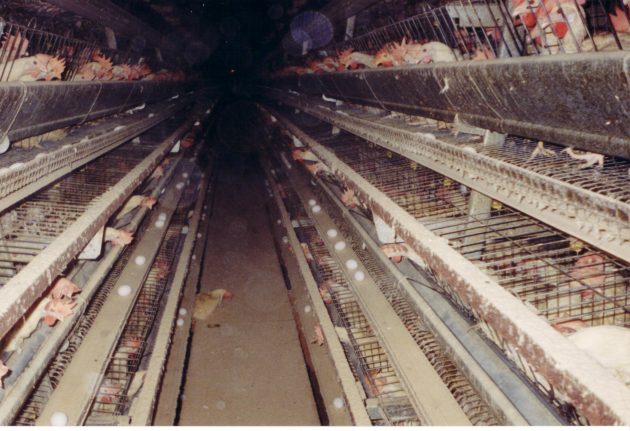
Cramped cages for chickens to be phased out in Canada
by Canadian Manufacturing.com Staff

A new National Farm Animal Care Council code for the care and handling of Canada's laying hens bans new battery cages as of Apr. 1, 2017; the regulations are thanks to an animal rights advocacy campaign

Battery cages will be banned in Canada, based on the grounds that they are inhumane. PHOTO: Mercy For Animals MFA, via Flickr
OTTAWA—Battery cages for Canada’s egg-laying hens are set to be outlawed.
An advocacy campaign organized by the Canadian Federation of Humane Societies (CFHS) has long sought to improve living conditions for the Canadian food staple.
This phase-out is part of a new National Farm Animal Care Council (NFACC) code for the care and handling of Canada’s laying hens, representing a significant change to practices in Canada’s egg industry.
The NFACC is an amalgamate of Canadian agricultural organizations, animal welfare groups and private food service businesses that works with governments to enforce standards for the treatment of farm animals.
Currently, 90 per cent of egg-laying hens in Canada live in battery cages, cramped spaces that often don’t provide enough room for hens to stand up or even spread their wings. As of Apr. 1, 2017, no new battery cages will be built in Canada and battery cages will be phased out completely within 15 years.
CFHS says this is an important first step in transitioning the country’s egg farms to more humane practices.
“The phase-out of barren battery cages is a huge win for Canada’s hens,” said Barbara Cartwright, CEO of the CFHS. “These changes mean that hens in Canada will have more space, the ability to stand up fully in all forms of housing and the chance to express natural behaviours.”
CFHS says chickens who live in battery cages are so cramped they cannot walk or spread their wings, which causes extreme stress and frustration for the animals.
This new code also introduces cage-free standards, standardizing how chickens must be housed and handled in cage-free environments.
“Unregulated, cage-free housing can be just as problematic as barren battery cages, with no enrichment for the hens and much more aggression and stress. The new standards in this code will ensure that the term cage-free is as progressive as it sounds,” said Geoff Urton, a negotiator for CFHS on the Laying Hen Code Development Committee.
It’s expected that 50 per cent of Canada’s hens will be transitioned to enriched cages or cage-free barns within the next 8 years, and between 85-100 per cent will be transitioned within 15 years.
The NFACC code affords the following rights to chickens:
- Perch space
- Feed and water space
- Nest boxes
- Good quality litter
- Appropriate and timely care for sick and injured birds
- Enrichments in all housing systems
- More space in all housing systems